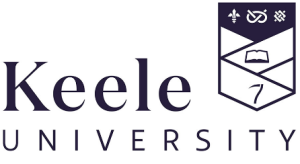
Product: Talis Elevate
The Challenge
Before Elevate, I would frequently provide copies of worksheets, reading and other in-class resources as printouts for in-person activities and digitally for those joining online. The printing cost was pretty high as you’d imagine and in a Sustainable Chemistry module, that wasn’t quite the right approach. I also had concerns about engagement with tasks, whether students were working together effectively, and whether some students were letting others do all the work. The social and collaborative aspects of the learning environment were not as strong as they could be.
The Solution
I decided to redesign a variety of activities using a mixture of text-based and graphical resources through Talis Elevate, for example diagrams for students to annotate with key chemical processes. I flagged sessions where we would use Talis Elevate and reminded students to bring an appropriate device, and I offered an incentive of engagement marks. Talis Elevate obviously made it possible for students to catch up asynchronously with tasks where sessions were missed, and a range of accessibility options to support my students.
The Results
The first success is in a significant reduction in printing, and I’d estimate that this is around 500 sheets for the module. Elevate has allowed me to provide a greater variety of documents allowing students’ choice of topics to feed into in class discussion. I have challenged myself to use Elevate for collaborative annotation of a wide variety of types of documents: diagrams and figures, datasets from government reports and news articles as well as assessment guidelines and journal articles and the biggest success here is being able to see what the students think and what they pick out as important. That’s a big shift from my previous experiences where I only know what they tell me as I walk around the class or contribute in the discussions. It’s also been interesting to see how students engage with sources between classes, either to catch up if a session has been missed or to prepare for the coming session. I’ve been generally impressed at how easy Elevate has been to use and how quickly students were able to engage with it.
“Talis Elevate has offered a new way to encourage student engagement in our Sustainable Chemistry module that enables greater social and collaborative learning and cuts down on paper printing!”
Dr Katherine J Haxton
The Future
I would love to continue to use Elevate, expanding into semester 1 teaching on information literacy particularly critiquing sources, finding incorrect or biased information and highlighting key structural elements of texts. I want to continue to use it for diagrams and figures and expand that into other modules where normally I am printing materials for private annotation to encourage greater collaborative and social learning in and between classes. I would also like to use it to annotate past exam papers, building in some assessment literacy and class discussion of how to work out what questions are asking.
We’d like to thank Dr Katherine J Haxton for providing this case study on her use of Talis Elevate.
Interested?
Find out more about Talis Elevate.
If you’d like to receive a product demo, get in touch.




